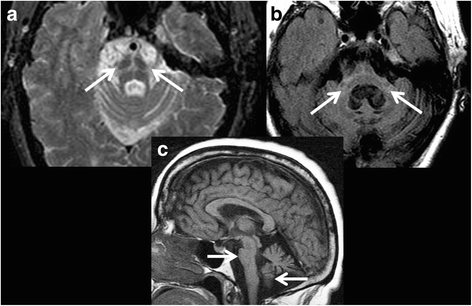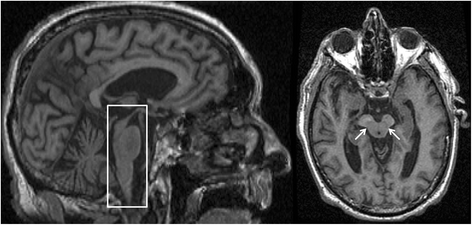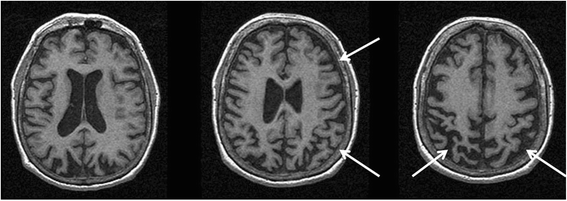Imaging biomarkers in Parkinson's disease and Parkinsonian syndromes: current and emerging concepts
- PMID: 28360997
- PMCID: PMC5370489
- DOI: 10.1186/s40035-017-0076-6
Imaging biomarkers in Parkinson's disease and Parkinsonian syndromes: current and emerging concepts
Abstract
Two centuries ago in 1817, James Parkinson provided the first medical description of Parkinson's disease, later refined by Jean-Martin Charcot in the mid-to-late 19th century to include the atypical parkinsonian variants (also termed, Parkinson-plus syndromes). Today, Parkinson's disease represents the second most common neurodegenerative disorder with an estimated global prevalence of over 10 million. Conversely, atypical parkinsonian syndromes encompass a group of relatively heterogeneous disorders that may share some clinical features with Parkinson's disease, but are uncommon distinct clinicopathological diseases. Decades of scientific advancements have vastly improved our understanding of these disorders, including improvements in in vivo imaging for biomarker identification. Multimodal imaging for the visualization of structural and functional brain changes is especially important, as it allows a 'window' into the underlying pathophysiological abnormalities. In this article, we first present an overview of the cardinal clinical and neuropathological features of, 1) synucleinopathies: Parkinson's disease and other Lewy body spectrum disorders, as well as multiple system atrophy, and 2) tauopathies: progressive supranuclear palsy, and corticobasal degeneration. A comprehensive presentation of well-established and emerging imaging biomarkers for each disorder are then discussed. Biomarkers for the following imaging modalities are reviewed: 1) structural magnetic resonance imaging (MRI) using T1, T2, and susceptibility-weighted sequences for volumetric and voxel-based morphometric analyses, as well as MRI derived visual signatures, 2) diffusion tensor MRI for the assessment of white matter tract injury and microstructural integrity, 3) proton magnetic resonance spectroscopy for quantifying proton-containing brain metabolites, 4) single photon emission computed tomography for the evaluation of nigrostriatal integrity (as assessed by presynaptic dopamine transporters and postsynaptic dopamine D2 receptors), and cerebral perfusion, 5) positron emission tomography for gauging nigrostriatal functions, glucose metabolism, amyloid and tau molecular imaging, as well as neuroinflammation, 6) myocardial scintigraphy for dysautonomia, and 7) transcranial sonography for measuring substantia nigra and lentiform nucleus echogenicity. Imaging biomarkers, using the 'multimodal approach', may aid in making early, accurate and objective diagnostic decisions, highlight neuroanatomical and pathophysiological mechanisms, as well as assist in evaluating disease progression and therapeutic responses to drugs in clinical trials.
Keywords: Atypical parkinsonian syndrome; Biomarkers; Diffusion tensor imaging; MRI; Molecular imaging; Myocardial scintigraphy; PET; Parkinson’s disease; SPECT; Transcranial sonography.
Figures



Similar articles
-
Neuroimaging Advances in Parkinson's Disease and Atypical Parkinsonian Syndromes.Front Neurol. 2020 Oct 15;11:572976. doi: 10.3389/fneur.2020.572976. eCollection 2020. Front Neurol. 2020. PMID: 33178113 Free PMC article. Review.
-
Chapter 33: the history of movement disorders.Handb Clin Neurol. 2010;95:501-46. doi: 10.1016/S0072-9752(08)02133-7. Handb Clin Neurol. 2010. PMID: 19892136 Review.
-
The role of neuroimaging in the diagnosis of the atypical parkinsonian syndromes in clinical practice.Neurol Neurochir Pol. 2015;49(6):421-31. doi: 10.1016/j.pjnns.2015.10.002. Epub 2015 Oct 23. Neurol Neurochir Pol. 2015. PMID: 26652877 Review.
-
Correlation of dopaminergic terminal dysfunction and microstructural abnormalities of the basal ganglia and the olfactory tract in Parkinson's disease.Brain. 2013 Oct;136(Pt 10):3028-37. doi: 10.1093/brain/awt234. Epub 2013 Sep 6. Brain. 2013. PMID: 24014521
-
Biomarkers in Parkinson's disease (recent update).Neurochem Int. 2013 Sep;63(3):201-29. doi: 10.1016/j.neuint.2013.06.005. Epub 2013 Jun 19. Neurochem Int. 2013. PMID: 23791710 Review.
Cited by
-
FMR1 locus isoforms: potential biomarker candidates in fragile X-associated tremor/ataxia syndrome (FXTAS).Sci Rep. 2020 Jul 6;10(1):11099. doi: 10.1038/s41598-020-67946-y. Sci Rep. 2020. PMID: 32632326 Free PMC article.
-
News about the Role of Fluid and Imaging Biomarkers in Neurodegenerative Diseases.Biomedicines. 2021 Mar 4;9(3):252. doi: 10.3390/biomedicines9030252. Biomedicines. 2021. PMID: 33806691 Free PMC article. Review.
-
Parietal Perfusion Alterations in Parkinson's Disease Patients Without Dementia.Front Neurol. 2020 Jun 23;11:562. doi: 10.3389/fneur.2020.00562. eCollection 2020. Front Neurol. 2020. PMID: 32655485 Free PMC article.
-
Extensive Delayed Brain Atrophy after Resuscitation in a Patient with Multiple System Atrophy.Front Neurol. 2018 Jan 15;8:754. doi: 10.3389/fneur.2017.00754. eCollection 2017. Front Neurol. 2018. PMID: 29379469 Free PMC article.
-
Methods and utility of quantitative brainstem measurements in progressive supranuclear palsy versus Parkinson's disease in a routine clinical setting.Clin Park Relat Disord. 2020 Jan 14;3:100033. doi: 10.1016/j.prdoa.2020.100033. eCollection 2020. Clin Park Relat Disord. 2020. PMID: 34316619 Free PMC article.
References
-
- Parkinson’s Disease Foundation - Statistics on Parkinson's. Available from. http://www.pdf.org/en/parkinson_statistics. Accessed 14 Dec 2016
Publication types
LinkOut - more resources
Full Text Sources
Other Literature Sources

